Le Blue du Ciel
A conversation with Annika Larsson for the unpublished artist’s book which accompained her solo show, Introduction, curated by Benedetta Carpi De Resmini at MACRO, Rome, in 2014.
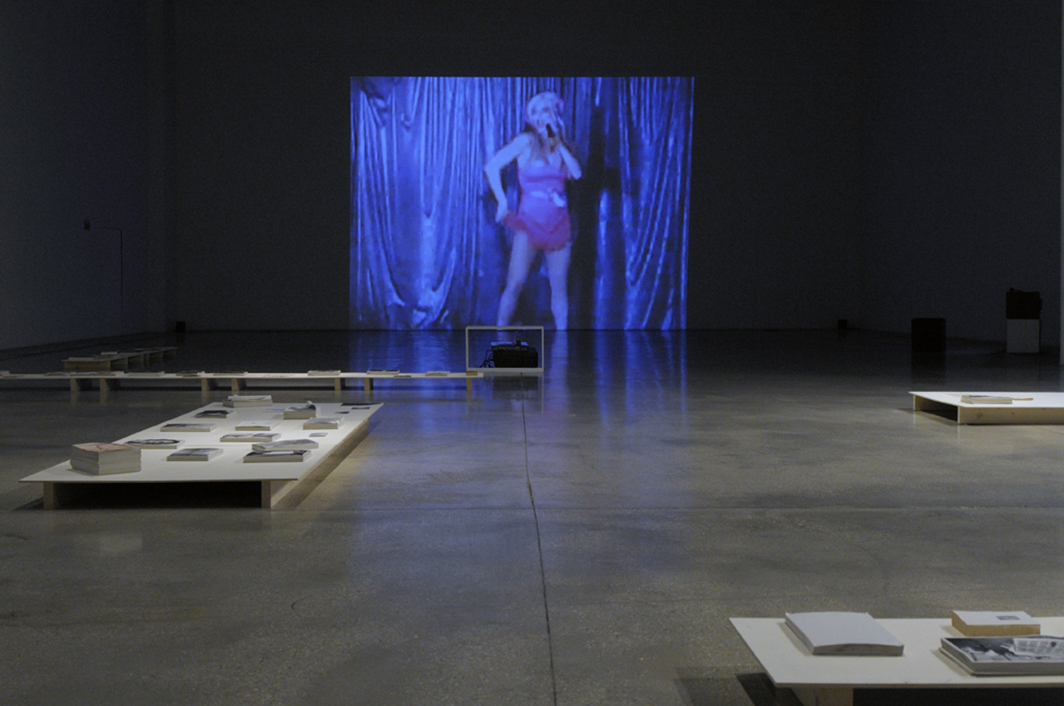
©LuisdoRosario per MACRO Museo d’Arte Contemporanea di Roma, 2014
Benedetta Carpi De Resmini: “Over the last few years, I have travelled often, and at length, in countries of winners and countries of losers, but I’ve found myself happier among the losers. Not because I like to watch the spectacle of others’ misery and humiliation, but because man is only tolerable and acceptable in misery and humiliation. A man in good fortune, a man seated on the throne of his own pride, his own power, his own happiness, a man draped in his trappings and in the insolence of a winner, is a repugnant sight.” Curzio Malaparte described the war years between 1943 and 1945 in this way, speaking of his novel La pelle (The Skin), published a few years later. I don’t know if you’ve ever had the chance to read this wonderful novel, but when I saw your film Blue, 2014, here in the show, I imagined your ‘virtue’ journey in the maze of the web. A journey that you’ve undertaken in the last few years, through words and situations key to Georges Bataille’s novel, Blue of Noon, which inspired your work emotionally. In the novel La pelle, Malaparte draws the reader into a sordid realism from which he would like to flee. Bataille puts the same attention on the reader, and in describing a world constantly on the edge, he keeps the reader captivated, by pulling him into places and situations he would like to avoid or from which he would like to soon escape. Your work, I think, can be placed in the middle – the material is put together not to create a broader view of the ‘ruins’ of our Western civilization, not to create the mark of something not really tangible, but to project the viewer into a disharmonious world. By using a careful construction of images, with an alluring and hypnotic rhythm, the viewer is immersed in a non-verbal language, with a rhythm that somehow distances itself from your previous work, which disrupts the traditional order of viewing…
Annika Larsson: As you mention, Blue is in close dialogue with Georges Bataille’s Novel Blue of Noon. This novel takes place in Europe in 1935, and many events in the novel are directly linked to political and historical events at that time (the 1934 uprisings, the Nazi takeover in Germany, the threat of civil war in Spain and Austria).When I was reading the book for the first time in 2010, I was struck by the many parallels this book had to the political climate of today’s Europe. But I was also extremely attracted by the way these events were described; through bodily expressions, strong emotions, transgressive acts or total apathy. One of the main questions I asked myself was: How do we, and our bodies, move, behave and respond to our time (late capitalism, crisis, increasing nationalism, xenophobia, homophobia)? But also: What political potential, force or threat lies in gestures and acts that are considered abnormal, transgressive or that have lost control? Bataille’s book has been described as “a novel that is as driven as a car whose driver has lost control. To read it is to share vicariously in being drunk at the narrative wheel…” (Blue of Noon – Introduction to the Penguin Edition, Will Self, 2001). This description of a narrative being drunk, a disoriented journey, felt very familiar to me. I often apply a narrative structure to my work, not to tell a specific story, but as a method to lead us into different modes of thinking. Since a narrative itself suggests that accounted events are connected, it functions as a seducer, a labyrinth or a mind-trap. There is an unavoidable need for us to understand “what we see”, which makes confusion and disorientation interesting techniques for exploring new concepts…
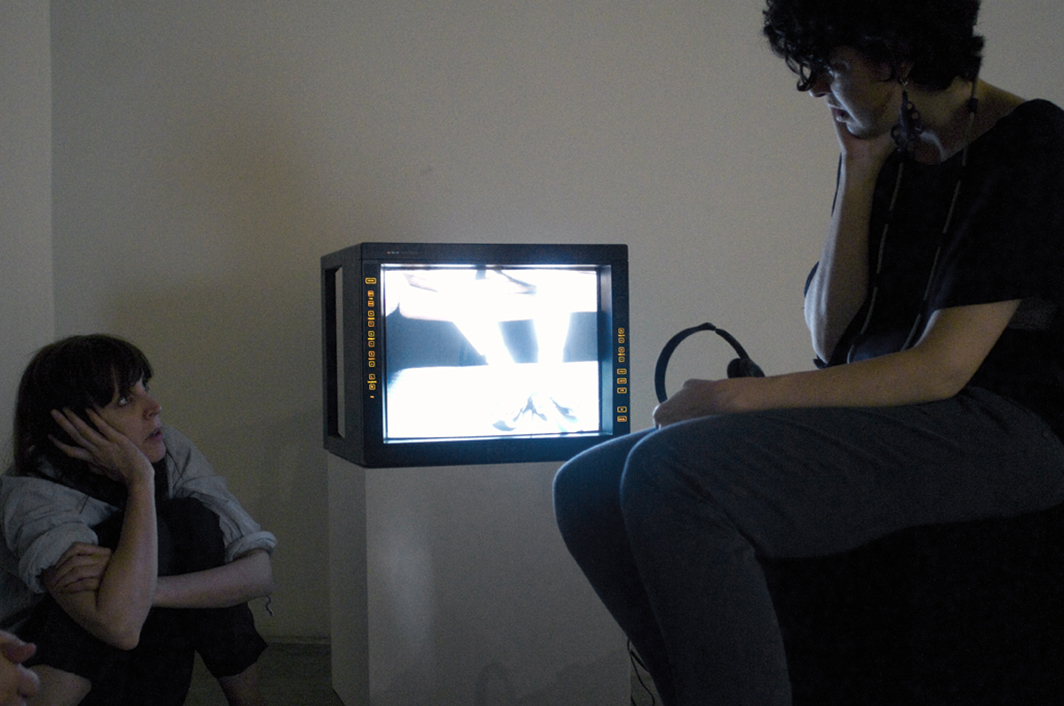
©LuisdoRosario per MACRO Museo d’Arte Contemporanea di Roma, 2014
B.C.D.R.: Also in your video Blind, 2011. Filmed at night, the camera focuses on a group of blind football players as they play a match. There is never a shot with depth of field, but a succession of close-ups of the players or other details that provoke what you define as disorientation. This is the latest in a long series of works that you have completed with a team of blind football players that carries out an in-depth analysis of the relationship between sight, vision, and blindness. Instead of provoking an immersive effect, the images that go by slowly, because of the unnatural scanning produced by slow motion, open to different perspectives. It is therefore the eye, vision, blindness, and time that are under investigation: to see is not only to see. I refer to Jacques Derrida’s work, Memoires d’aveugle. L’autoportrait et autres ruines, in 1990, where he realizes the necessity of spatialization, the need to deconstruct the very notion of seeing, passing through blindness, to arrive at vision. Every look, to be real, needs concealment, a veil that partly obscures it. Every light that conveys sight participates in a dimension of shadow and darkness, affirming that vision can never be a pure and unconditioned experience, but is always connected to its complementary and opposite aspect. Affirming that to see “the world”, sight must reside in the middle, in that space between presence and absence. How much of this thought entered into the making of your film?
A.L.: It is interesting that you bring up this book, because it indeed played an essential role for the works I did on blindness. Especially, as you describe, the presence of blindness in the act of seeing itself, and the impossibility to experience ‘pure vision’, as it is indeed itself blind. In Memoires d’aveugle, Derrida also speaks about the idea of the blind as ‘seers’, visionaries, the ones who explore where they “do not see, no longer see, or do not yet see.” Certainly, there lies a revolutionary potential and threat in ‘not seeing’, or in ‘not seeing’ the way others are seeing, as ‘to see’ is also to be enlightened by the ideas and norms of a society, how to see the world. Which brings up interesting questions around seeing and believing, vision and imagination. There is also a chapter on tears in this book, “These weeping eyes, these seeing tears”. Bataille too was interested in tears: as a spasm, an interruption, an experience that always has an effect, as non-knowledge that escapes reason and understanding.
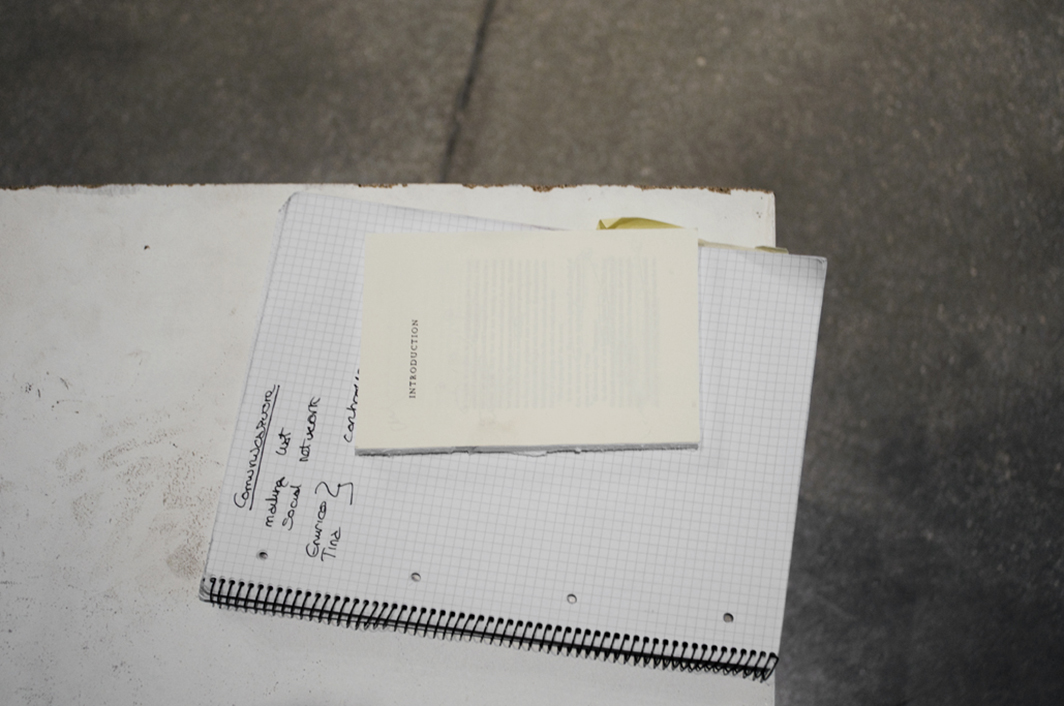
©LuisdoRosario per MACRO Museo d’Arte Contemporanea di Roma, 2014
B.C.D.R.: “Tears are fertilizing,” states Derrida; the world is created from tears, by veiling an aspect of reality, many other aspects are unveiled. In this way Blue becomes a revealer of reminiscences, images and associations. The short video clips in the film, personal and somewhat private, become a collector of experiences and realities that do not obey common logic, but seem to follow ‘dream’ logic. Dreams, in fact, do not follow the laws of our thoughts, but they are particularly connected to an emotional state: they represent that hallucinatory state that is independent from ‘dreaming’ meant as an act of sleeping. The protagonists of Blue do not follow the common succession of cause and effect, but they often live in a state of euphoria or unconsciousness. In this case they are the same people that give voice to the ‘self narrator’ that, by recording himself, gives sense to the lived or imagined reality of the ‘self protagonist’.
This is how we arrive at a ‘story of a story’ constructed with imaginative material organized in narrative form and characterized by a strong emotionality…
A.L.: One of my methods in making this film, as you also mentioned earlier, was through extracting words from the novel, words that became lists of connected words and associations like “…Cloudy sky, nausea fatigue, his mouth open, drool into beard, me staring at my feet, collapsed socialist expectations, me sick, toilet, try vomit, two fingers in throat, back in bed, scary fingers, bony knees, silence…” to mention a few. The book also intrigued me for the way the political and erotic motives echo each other, and for how many of the political tendencies at that time are described through associations with objects, emotions, physical conditions or taking the intimate shape of human beings. There is a political anxiety throughout the whole book, an anxiety very much related to the one that we are experiencing today, a crisis associated with a personal or bodily crisis. The ‘self narrated’ footage that I found online, for example, on people filming their trembling hands, their self starvation, their sneakers getting wet in the bathtub or the non-participatory witnessing of a political manifestation, are in many ways symptoms of a condition that we are in (of late capitalism, crisis, the rise of extreme rights). In many ways a state of impotence (politically and sexually), that is shared with the novel. At the time Bataille wrote this book, he was sure of triumph of fascism, and “the question he raised was not how to prevent the triumph of fascism but what to do in a world where fascism has triumphed”. I see many parallels to our time, perhaps a “what to do in a world where capitalism has triumphed”. Many of these different video clips that people have uploaded online reflect that. But the footage, when assembled, as you say, also leads into dreamlike unknown paths, like those of a flaneur, placing our movement “…in the footsteps of the other, making desire and surveillance no longer opposites but mirror images…” (Tom McDonough, The Crimes of the Flaneur, October, Vol. 102, Autumn, 2002).
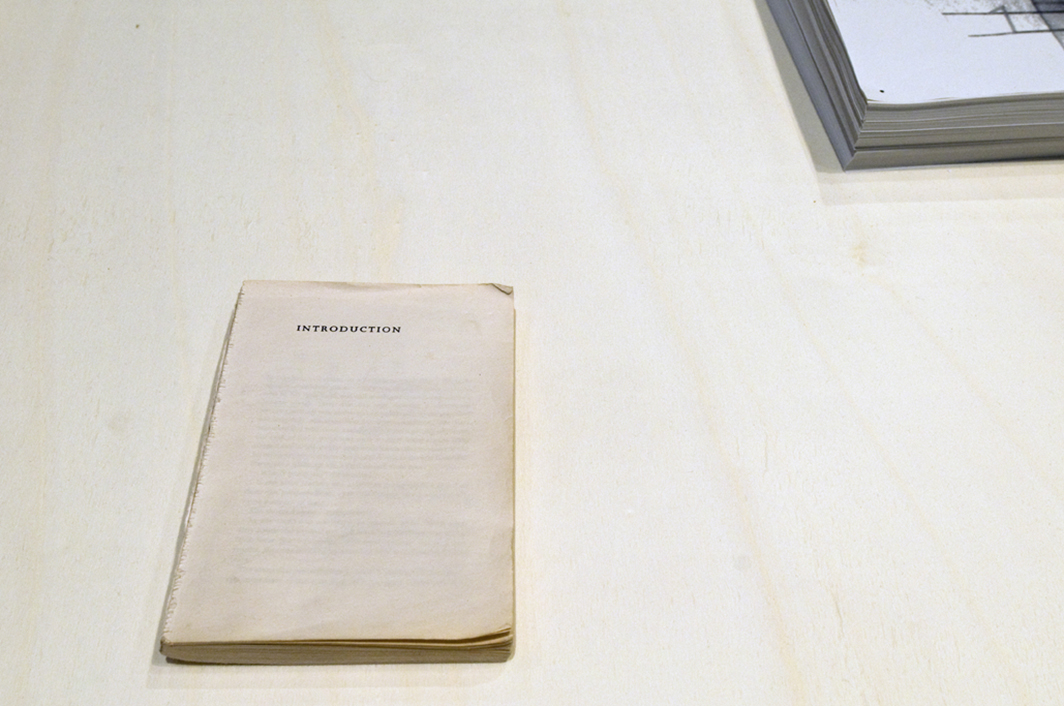
©LuisdoRosario per MACRO Museo d’Arte Contemporanea di Roma, 2014
B.C.D.R.: One of the film’s most meaningful passages is a fixed camera that films the face of a person trying to put on a wig. With great clarity and interesting references, many of the authors of the clip, even though they are numb from a state of false madness, caution us that it is society itself that is being threatened. The author probably shot the scene without any intention of referring to Carl Theodor Dreyer’s film, but watching the passage again, the connection with Joan of Arc’s suffering face from 1928 is immediate. The heroine of the film The Passion of Joan of Arc is completely isolated from her historical context, giving free rein to the emotions. In Blue, the passage is underlined by the words of Judith Butler, which resound like a warning: the incident of sexist intolerance, made explicit by the sound, returns to a face with a mask, showing us the necessity of overcoming the physical limits of the body. Throughout Blue, there are various references to sexist power; the atmosphere that pervades all the film is very evident, even physical, I would say, right down to its architecture. A question that underlies the entire work and seems to refer to the The Psychic Life of Power by Butler: how can we break the mould, hetero and homosexual, and remove inequalities, whether connected to sex or gender?
A.L.: Yes, in this scene you can hear Judith Butler’s voice telling a story about a young boy who walks with a ‘swish’, his hips moving back and forth in a feminine way, and who one day ends up being thrown over a bridge and killed by some other boys. Butler draws on the connection between a deep panic and fear, an anxiety that pertains to gender norms, and its consequences. And she states that “if someone says: you must comply with the norm of masculinity otherwise you will die… then we have to start to question what the relation is with complying with gender and coercion? ” In many ways this story is summarising a lot of thoughts I had in the film. Especially the reflections I had around notions of norm/abnorm, power/impotence, sickness/health, and emotion/reason. The way society and we ourselves shape our subjects. But also my thoughts on the power and threat of gestures and acts that are considered abnormal and transgressive, as in Butler’s story of the young boy being killed for the way he walked, or Russia’s present war against LGBT-persons depicting homosexuals as dangerous or as non-human, or the British police and press hunt for rioters during the London uprising in 2011. In The Psychic Life of Power Butler connects the political and the psychic, and shows not only how society shapes our subjects through incorporation of norms, but also how our psyche plays a part in the “desire for the norm and for subjection more generally in terms of a prior desire for social existence.”
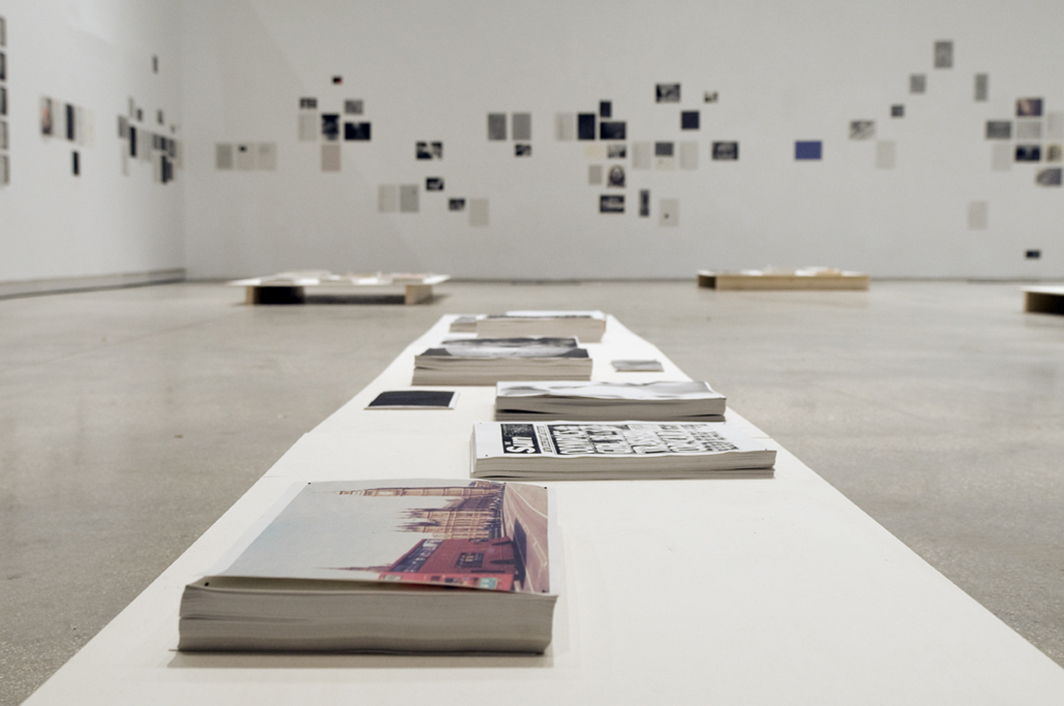
©LuisdoRosario per MACRO Museo d’Arte Contemporanea di Roma, 2014
B.C.D.R.: In other works of yours we can identify the same elements, those from Butler’s book; the relational dynamics that show how both exercising and being subject to power are two faces of the same phenomenology. The two men and the dog in the video Dog come to mind, which you made ten years before starting with Blue. In this case we see how the body of the ‘servant’ becomes the body of the ‘master’, to paraphrase Butler, “subordination proves indispensable in becoming the subject” and “as a necessary condition to becoming the subject, subordination implies a state of forced submission”. In the video we see a strange game of three: two men dressed in impeccable grey suits that split the roles of the scene, the older one holding the muscular grey dog tightly, while the young one with the whistle seems to mark the time. In this case the paradox of objectification itself of a role is made explicit, which is not separable from power, always linked to an external dynamic that sets the conditions of its own existence… a non-existence. The domain of the void emerges strongly in Dog: the scenes, curated in the tiniest detail, don’t leave any opening to the definition of a process of ransom. Meanwhile, that which many have defined as the power of ‘seduction’ emerges…
A.L.: Yes, Dog is perhaps the one of my works that most directly deals with dominance and submission. The work emerged out of a few different thoughts I had at that time, one of them relating to written accounts online from people who desired to be in a state of submission or domination through role-plays as dog/dog-owner. Though the film stages a less extreme game, nevertheless a game, the relations remains the same: that of master/slave, subject/object, and desire/desired. As you mention there is a sense of a void in this film, an isolated time and space that opens up for anything to happen, a moment of liberation from the existing order, through play. And although it seems to have a narrative structure, it appears to have no comprehensible structure, but an ambiguity that is playing a similar game with the viewer, as that between the men in the film. The ambivalent image, similar to the desire to be a thing, an object (while still being able to reflect upon it) is a double image, a mirror image, letting us be in two places at the same time. “There is no better way to know death than to link it with some licentious image.” as The Marquis de Sade said. There is a moment at the end of Blue of Noon where the main protagonists during the night arrive at a cliff’s edge overlooking a graveyard full of burning candles, when they suddenly see “an empty space opening up beneath…No less infinite than the starry sky above”. Flickering, this multitude of lights becomes a vision of a star lit sky – a limitless space, vertigo, where up and down no longer are meaningful. Bataille states, “We approach the void … but not to fall into it. We want to become intoxicated with dizziness and the image of the fall is sufficient.”
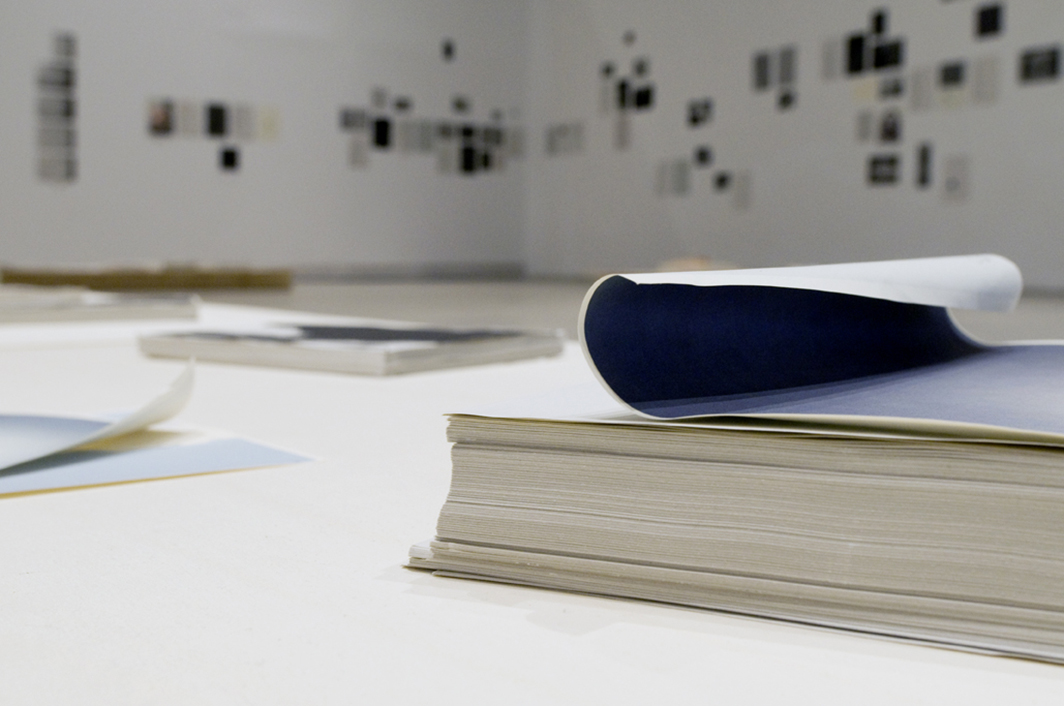
©LuisdoRosario per MACRO Museo d’Arte Contemporanea di Roma, 2014
B.C.D.R.: EAV.ECSTASY ABOVE A VOID, made in the same year you started working on Blue, it is a work that goes back to the theme discussed previously, that same condition of domain that we see emerge in Dog. We can trace the same relationship, as you yourself state in the words of Bataille, in the last pages of Blue of Noon: an evocation of extreme possibilities, of the temptation of absolute, irreversible action, that looms over moments of erotic exhibition and abandon. EAV seems to be the perfect conclusion to this exhibit, following in the wake of Blue; the footage lingers on that radical experience connecting sex with death. The film opens with a sentence, a caption to the scene that follows: “At the point of orgasm, in my mind all of my guts are being squished out. My eyeballs are popping out, my brain comes shooting out the top of my head, all my blood squirts everywhere … What a release, that imagery really gets me off? Seeing that foot coming down on me, coming into my stomach and pressing all that weight on to me till I burst! Wow!” These are the words of Jeff “The Bug” Vilencia, one of the most important supporters of perverse games between victim and executioner, who sees the contentment of his own desires in the erotic trend linked to foot fetishism. This practice of stepping on a small animal or object, having become the media, is powered by a process of identification with the animal or toy being stepped on.
In EAV you highlight that ancient desire of staging one’s own dreams and obsessions – time and space no longer exist, and the imagination prevails over an insignificant realistic background. In these scenes, like in Blue, a bit along the lines of the Theatre of the Absurd, it seems there is a will to reach the deepest state of the mind, the discovery of the universal and collective significance of personal obsessions. Artaud said: “the theatre, far from copying life, puts itself, if possible, in communication with pure forces… a violent and concentrated action is a form of lyricism: it evokes supernatural images, a haemorrhage of images, a bloody jet of images both in the head of the poet and in that of the viewer.”
There is a clear aesthetic in this succession of slides, of the two films shown here, that is created in the deconstruction itself, revealing the source or the paradoxical basis of the given structure. The images projected – whether they be physical, violent, or sensual – hypnotize the viewer, in order to arrive at an upside-down action from these. They allow a reflection on the historical context, on the transitory value of actions, sublimating them…
